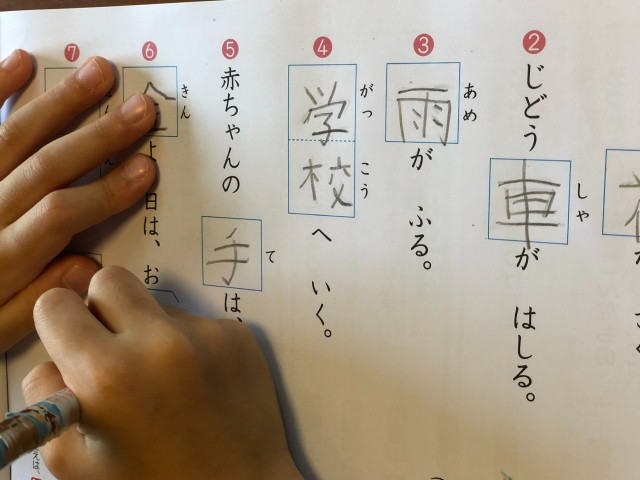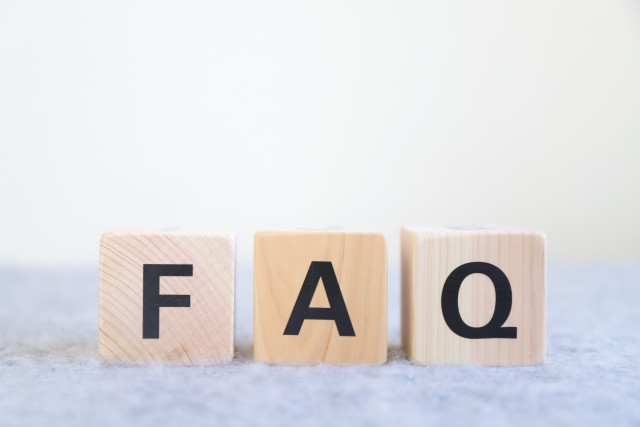The Japanese-Language Proficiency Test or JLPT is the most famous and used Japanese proficiency test for foreign nationals, so understanding its ins and outs will be helpful and at times mandatory, especially for those applying to a school or for a job in Japan.
Table of Contents
What is the JLPT?
The Japanese Language Proficiency Test or JLPT for short - 日本語能力試験 Nihongo Nouryoku Shiken in Japanese - is an examination set to evaluate an applicant’s capability in vocabulary and grammar in Japanese. The JLPT has five levels measuring the linguistic competence of an individual who is not a native Japanese speaker.
Basic overview and history of the JLPT
JLPT was released to the public in 1984 by the Japan Foundation and Japan Educational Exchanges and Services, with the objectives of utilizing it as a language criteria for non-Japanese. JLPT aims to assess an applicant’s flexibility of the Japanese dialect and how well they can apply it, including during employment to the company and its clients. Moreover, this proficiency test would help secure a stable salary and advancement of the employee’s position in the industry as one indicator of their Japanese proficiency - especially if one continues to study and improve their Japanese and advance up the levels.
Millions of examinees have taken the exam ever since its establishment date and even more continue to the present.
※ Japanese-Language Proficiency Test, "Objectives and History"
When is the JLPT required?

JLPT is only required when your target school or company asks you to take the examination. Some firms require N1 or N2 levels of certification, deeming you fit for the job using higher level Japanese. However, it’s not always necessary to get the job, but it is important as employers do want to know your level of Japanese, and it’s always a great official certification to add to your resume. In fact, in 2018, 33% of test takers took the test so that they could get jobs or promotions in Japan or in their own countries.
Some schools such as universities and vocational schools will also ask that you have a certain level of Japanese in order to enroll. Thus many people either study Japanese and take the test before coming to Japan, or enroll in a Japanese language school in Japan before going to university or vocational school. About 27% of test takers in 2018 intended to use the results for education purposes.
And the other big group of test takers? They simply wanted to measure their own Japanese proficiency. And that’s perfectly fine too!
And just one more thing - an N2 or N1 can potentially provide you with a longer period of stay when applying for certain visas in Japan. It doesn’t hurt to include it in your application if relevant!
※Japanese Language Proficiency Test, “JLPT in charts”
Writer's Pick
JLPT Levels - N5 to N1

As aforementioned, the Japanese Language proficiency test has five levels set to determine your ability to read and listen - N1, N2, N3, N4, N5 with N1 as the most difficult level. Allow us to walk you through the different levels and what is required of you compared to previous levels.
N5
N5 is the easiest stage among all the levels. The test is split into 3 parts - Vocabulary, Grammar and Reading, and Listening. There’s short breaks between each part.
The examinee should be able to understand the absolute basics of Japanese - hiragana, katakana and some kanji. You also need to know basic adjectives and verbs, such as to understand simple situations from pictures in order to choose the right words to describe the situation. You also need to demonstrate an understanding of particles - because let’s be real, it’s one of the hardest things to grasp in Japanese but you need it constantly. Basic synonyms are also important to know, as well as how to sort through a simple passage for information.
For the Listening section, the examinee needs to understand conversations tackling regular events such as classroom settings, introductory conversations and so on, but the conversations are very short and spoken very slowly. From what you hear, you have to choose the right picture or option.
N4
N4 also consists of the same 3 sections as N5 - Vocabulary, Grammar and Reading, and Listening.
This level assumes that you have basic conversational Japanese, past the “hajimemashite nice to meet you” self-introduction stage of Japanese. The words and sentences you are expected to know are still quite basic - but the grammar is slightly more complex and you are expected to know more synonyms and responses to daily situations.
Meanwhile, in the listening part, the conversations being heard are spoken at a slower than native speed like in N5, but the sound clips are a little longer than in N4.
N3
N3 is the middle level of the 5, also split into 3 sections. However, you’re expected to know a lot more idioms and phrases that native Japanese use.
For reading, one cannot simply find the information and answer but must know how to summarize and interpret the information correctly to get the correct answer.
The speaking speed is a little faster than N4 and closer to native Japanese, but not quite.
N2
The difference between N3 and N2 surprises a lot of people - and it’s not just the jump in difficulty. The test is now split into 2 sections instead of three - Language Knowledge and Reading for 105 minutes and Listening for 50 minutes.
N2 is often the minimum you are expected to know for business Japanese and therefore jobs using Japanese; thus it’s much harder than N3 which focuses more so on everyday life. It’s said that N2 takes about twice the amount of studying as N3 so don’t take it lightly!
For kanji, you will have to be able to do things like choose the sentence where it’s used correctly out of 4 and choose the right word out of 4 similar choices (this is hard if you only vaguely recognize characters). The reading passages are much larger and you will have to be able to compare two passages, and summarize long passages into a sentence.
The situations in both the reading and listening sections have more to do with work and business than in previous levels.
N1
Don’t be fooled by the 1. This is the hardest level in the 5 JLPT levels. This is the level that many native Japanese will exclaim “Wow, this is hard even for us” if you show them your study materials.
The N1 test is broken into 2 parts like the N2 - Language Knowledge and Reading for 110 minutes and Listening for 60 minutes. Language Knowledge and Reading will test you about your kanji knowledge, your ability to tell apart synonyms, grammar usage, and your ability to understand the text and the author’s intent as well as information from newspapers, flyers, etc.
The Listening section will be quite rapid as it’s native level speed and have an extensive amount of information to listen to and sort through for the answer. As this is the hardest level, you are expected to be able to understand vocabulary and information from a wide variety of topics, from politics, social and environmental issues, everyday life, and so on.
※ Japanese-Language Proficiency Test, "N1-N5: Summary of Linguistic Competence Required for Each Level"
How to Take the JLPT and Other Tips

The JLPT is offered twice a year, once in July and once in December.
If you’re not in Japan yet but you need the test to get into your program of choice, don’t worry! There are many testing sites established overseas such as in Asia, Oceania, North America, Latin America, Europe, the Middle East, and Africa. Please check and click on the map for specific countries if you plan to take the test overseas. In Japan, you can take the test in all 47 prefectures.
※JLPT, “List of Overseas Test Site Cities and Local Host Institutions”
Online registration for JLPT is accessible through the internet on their official website. Below are the following guidelines in applying for the examination:
-
Be informed of the testing dates. Usually, the first batch of exams is conducted during July, and the second in December. It’s only held twice a year so don’t miss it, especially if it’s mandatory for your future plans. Pay attention to the deadline to register as well.
-
Use MyJLPT on Japan Educational Exchanges and Services official site to sign up for the test. You will need to register to get a MyJLPT ID in order to register for a test. (MyJLPT is only for those testing in Japan. If you are testing overseas, please check the website for what to do.)
-
Apply for the examination and ready your 6,500 yen as a payment. You can pay via valid credit card or have it wired through a bank in case you’re overseas.
-
Get your test voucher which is vital to taking the test, so keep an eye out for it in the mail.
-
Take the test in Japan or in designated testing sites abroad.
-
Obtain the examination result on MyJLPT in about 2 months. You can browse the score report on MyJLPT online first. For those who passed, a certification will be sent to your address that you registered when you first signed up. (For those overseas, check with your host institution about when and how you would receive the results.)
※ Japanese-Language Proficiency Test, "Taking the Test in Japan" ※ Japan Educational Exchanges and Services, "Test Implementation Guide"
Tips for Studying and Taking the JLPT

It’s important to be prepared for this test, as it’s quite the price to pay for a test and it may determine how you proceed with future plans. Here are some tips to be prepared.
Studying for the test
-
Figure out how much studying you have to do versus how much time you have. Especially if you’re not a Japanese language student, it’s important to block off time after school or work to study and on the weekends as well.
-
If possible, find other people to study with. Some people prefer to study alone, which is perfectly fine, but a lot of people could use extra motivation and you can figure out difficult problems together.
-
Don’t cram. Japanese takes a lot of time to master, and the JLPT is no different. Studying a little bit every day over a long period of time is much better than trying to learn it all last minute.
-
Utilize free study materials online, and the official site even offers an official practice workbook with actual questions from past tests, but also try to invest in a good study book. If you’re confident in certain sections but not others, there are great study resources that focus on just one section of the test to give you extra practice. Writing things down in a physical book or notebook also gives you practice for the actual test when you need to take notes and underline key points for later. Flashcard apps are also great to study kanji and you can even find some premade ones.
-
Take practice tests!! There are sample questions on the official website, but also practice tests you can try online, or ones you can purchase.

The Test Day
-
Do not forget your test voucher!!
-
Bring an HB pencil (two to be safe, three to be extra careful) and an eraser (or two). Mechanical pencils are fine as well. No pens!
-
Get good rest prior to the examination day as the test is quite long.
-
Bring a wristwatch but make sure it’s analogue and nothing will beep during the test.
-
TURN OFF your phone. Any sound from your phone means you will get a warning or even asked to leave immediately. Don’t risk it, not when you studied so hard (and paid a lot) to take the test.
-
Bring a bottle of water and a snack for the break time. But also don’t drink too much because you can only use the restroom during the break times.
-
Figure out where the restroom is before the test if you can so you’re not wasting time looking for it when lots of students will probably be in line during the break.
FAQ for After the Test

How do I check my score?
As mentioned above, you will be mailed your certificate, but you can check your score online before that.
Can I retake just one section?
Unfortunately, no. You have to take all sections in order to be scored. There is a minimum score to pass per section, and a minimum total score you have to achieve in order to pass the test.
Does my JLPT certificate ever expire?
(Fortunately) It doesn't! Once you take the test and get your score, it's yours to use however long you need. However, if you are using it to prove your Japanese proficiency to get into a school, a program or to get a job, then it's your responsibility to keep that level of Japanese they require. (Some institutions might ask you to retest so you maintain your Japanese level.)
What if I lose my certificate?
You can have a "Certificate of Result and Scores" mailed to you. It is not the exact same as the original certificate, but it can be used to prove your score.
Summary
The Japanese Language Proficiency Test is a calling to step-up your game in terms of your Japanese studies and your future employment. Holding a JLPT certification is an edge for job or school placement - and often mandatory in Japan. Besides, it’s always great to have a goal to work towards to motivate yourself to continue to aim higher. Add officially certified Japanese language skills to your resume and your list of accomplishments!


































